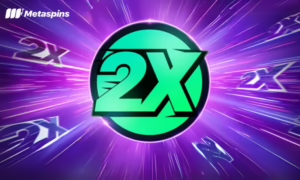A mining pool is a group of blockchain miners who connect the computing power of their nodes together in order to strengthen their computing power and share any rewards gained by completing a block.
Mining pools were first started in response to the increased competition and difficulty involved in trying to complete Bitcoin blockchain blocks and receive the rewards. This is because the Bitcoin (BTC) blockchain’s protocol is designed to adjust the difficulty of processing a new equation based on the overall number of processing units connect to the Bitcoin network.
The purpose of this is to maintain the frequency with which new blocks are mined and new Bitcoin generated. This means that the more people join the Bitcoin mining network the harder the equation becomes, and therefore the lower the chances of any solo miner being the lucky ‘winner’ to solve the problem and gain the Bitcoin reward. The set time for generating each new block, and therefore new bitcoin is one every ten minutes.
Initially, all miners mined on regular CPUs. But they soon realized that Graphic Processing Units (GPUs) could dedicate more processing power. This increased their chances of solving the equation, but also increased the mining difficulty. Therefore, CPU users switched to GPUs, which evened the mining field a bit, with Miners still scrambling to have the latest and most powerful GPUs.
They also began to develop methods of connecting multiple GPUs to further increase their hashing power. Miners then searched for another mining method to get ahead of competitors and discovered ASICs. While they were fairly even to begin with, ASIC game array capacity increased to the point where they often supersede GPU potentials, especially in ASSPs that are specifically designed for mining purposes.
This led to the development of mining pools. A mining pool is a consortium of miners that contribute their mining power into the central ‘pool’. Therefore, instead of thousands of individual miners attempting to solve the equation, all of this processing power is joined to form a single super-processor of sorts.
This greatly increases the chances of the collective solving the equation. Any successfully mined Bitcoins are then split across the entire mining pool. This division is based on the percentage of processing power that each miner contributed relative to all the other miners. One of the drawbacks of this system is that mining pools charge fees to its users. Since then, mining pools have branched out to mine for other types of cryptocurrencies as well, although Bitcoin still remains the most popular.







